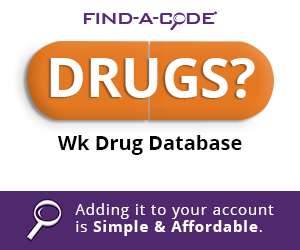
Medicare Changes Requirements for Implantable Cardioverter Defibrillators (ICDs)
February 26th, 2018 - Wyn Staheli, Director of Research
Whenever there is a high-cost item, CMS has historically evaluated usage to determine appropriateness of billing and this is another example. A Decision Memo was released on February 15, 2018 which included the following changes:
- Changes to who qualifies for a device and the required waiting periods
- Patient registry no longer required
- Cardiac magnetic resonance imaging (MRI) added as an acceptable measure for determining the left ventricular ejection fraction
- Patients who are having ICD placed for prevention, must have a "Shared Decision-Making" encounter
While removing the requirement for patient registries will reduce some administrative burden, the addition of the shared decision-making encounter requirement does present a significant change which will require changes to procedural processes. The memo states:
“a formal shared decision-making encounter must occur between the patient and a physician (as defined in Section 1861(r)(1)) or qualified non-physician practitioner (meaning a physician assistant, nurse practitioner, or clinical nurse specialist as defined in §1861(aa)(5)) using an evidence-based decision tool on ICDs prior to initial ICD implantation. The shared decision-making encounter may occur at a separate visit.” - Decision Memo for Implantable Cardioverter Defibrillators (CAG-00157R4)
Watch for payer policy changes relating to this decision memo and take this time to begin reviewing policies and procedures. Review the shared decision-making requirements and review evidence-based decision tools to determine which will be used by your organization. Be sure your organization implements new procedures to ensure that all required elements are met to ensure continued reimbursement.
###
Questions, comments?
If you have questions or comments about this article please contact us. Comments that provide additional related information may be added here by our Editors.
Latest articles: (any category)
Artificial Intelligence in Healthcare - A Medical Coder's PerspectiveDecember 26th, 2023 - Aimee WilcoxWe constantly hear how AI is creeping into every aspect of healthcare but what does that mean for medical coders and how can we better understand the language used in the codeset? Will AI take my place or will I learn with it and become an integral part of the process that uses AI to enhance my abilities?
Specialization: Your Advantage as a Medical Coding ContractorDecember 22nd, 2023 - Find-A-CodeMedical coding contractors offer a valuable service to healthcare providers who would rather outsource coding and billing rather than handling things in-house. Some contractors are better than others, but there is one thing they all have in common: the need to present some sort of value proposition in order to land new clients. As a contractor, your value proposition is the advantage you offer. And that advantage is specialization.
ICD-10-CM Coding of Chronic Obstructive Pulmonary Disease (COPD)December 19th, 2023 - Aimee WilcoxChronic respiratory disease is on the top 10 chronic disease list published by the National Institutes of Health (NIH). Although it is a chronic condition, it may be stable for some time and then suddenly become exacerbated and even impacted by another acute respiratory illness, such as bronchitis, RSV, or COVID-19. Understanding the nuances associated with the condition and how to properly assign ICD-10-CM codes is beneficial.
Changes to COVID-19 Vaccines Strike AgainDecember 12th, 2023 - Aimee WilcoxAccording to the FDA, CDC, and other alphabet soup entities, the old COVID-19 vaccines are no longer able to treat the variants experienced today so new vaccines have been given the emergency use authorization to take the place of the old vaccines. No sooner was the updated 2024 CPT codebook published when 50 of the codes in it were deleted, some of which were being newly added for 2024.
Updated ICD-10-CM Codes for AppendicitisNovember 14th, 2023 - Aimee WilcoxWith approximately 250,000 cases of acute appendicitis diagnosed annually in the United States, coding updates were made to ensure high-specificity coding could be achieved when reporting these diagnoses. While appendicitis almost equally affects both men and women, the type of appendicitis varies, as dose the risk of infection, sepsis, and perforation.
COVID Vaccine Coding Changes as of November 1, 2023October 26th, 2023 - Wyn StaheliCOVID vaccine changes due to the end of the PHE as of November 1, 2023 are addressed in this article.
Medicare Guidance Changes for E/M ServicesOctober 11th, 2023 - Wyn Staheli2023 brought quite a few changes to Evaluation and management (E/M) services. The significant revisions as noted in the CPT codebook were welcome changes to bring other E/M services more in line with the changes that took place with Office or Other Outpatient Services a few years ago. As part of CMS’ Medicare Learning Network, the “Evaluation and Management Services Guide” publication was finally updated as of August 2023 to include the changes that took place in 2023. If you take a look at the new publication (see references below),....

